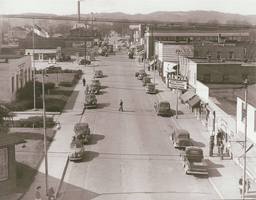
Kenova lies at the westernmost point of West Virginia, in Wayne County at the juncture of U.S. 60 and U.S. 52 and the confluence of the Ohio and Big Sandy rivers. L. T. Peck, the founder, chose the site just west of Ceredo because it was the place where the Norfolk & Western (N&W) Railway proposed to build the first bridge across the Ohio River above Cincinnati. Peck organized the Kenova Association, purchased 900 acres of bottomland, and started his town in 1889. The site was named Kenova from the abbreviations of the three adjoining states: ‘‘Ken’’ for Kentucky, ‘‘O’’ for Ohio, and ‘‘Va’’ for (West) Virginia.
In 1890, the original line of the N&W running from Kenova down to Mingo County was completed. There was an influx of engineers, firemen, conductors, brakemen, and other railroad personnel. In 1892, the N&W Ohio River bridge was completed. That year the Baltimore & Ohio (B&O) Railroad also entered the community. Kenova was incorporated as a town in 1894. From its founding into the early 1900s, Kenova was predominantly a railroad town and served as a terminal for the N&W, Chesapeake & Ohio (C&O) Railway, and B&O lines.
During the 1920s, Kenova received its charter as a city. The historic Dreamland pool opened in 1925 and is still in operation. Kenova experienced two disastrous floods, in 1913 and 1937, but residents recovered from these calamities and the town grew. Although Kenova’s population has declined from a peak of nearly 5,000 in 1970 to 3,030 in 2020, it remains the largest city in Wayne County.
This Article was written by Joseph Platania
Last Revised on February 15, 2023
Sources
Rice, Otis K. & Stephen W. Brown. West Virginia: A History. Lexington: University Press of Kentucky, 1993.
Rice, Otis K. West Virginia: The State and its People. Parsons: McClain, 1972.
Thomson, C.W.. History of Ceredo and Kenova. Ceredo: 1958.
Platania, Joseph. Wayne County's Twin Cities. Wonderful West Virginia, (Feb. 1994).
Cite This Article
Platania, Joseph "Kenova." e-WV: The West Virginia Encyclopedia. 15 February 2023. Web. 26 July 2024.


Comments?
There aren't any comments for this article yet.
Click here to read and contribute to the discussion →